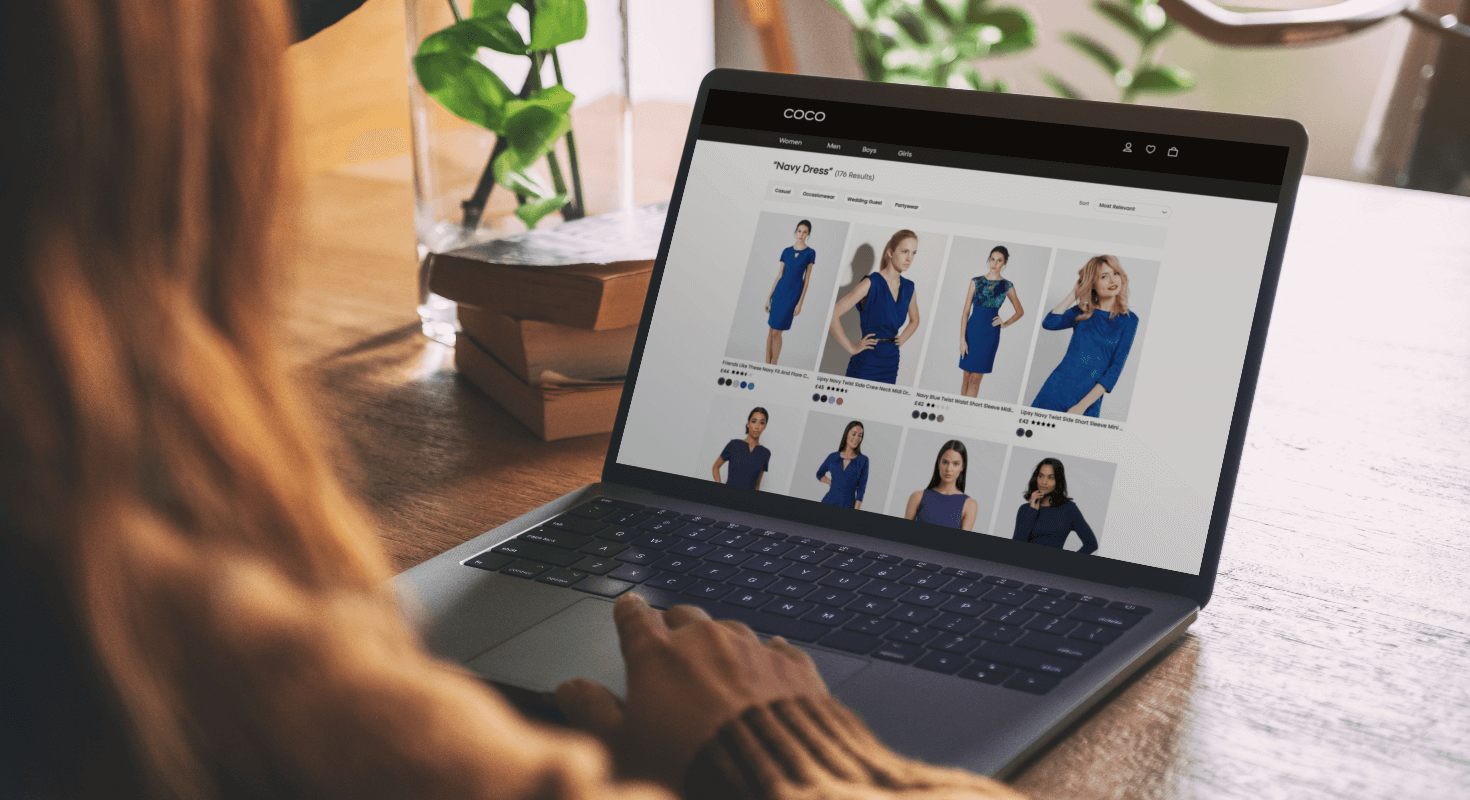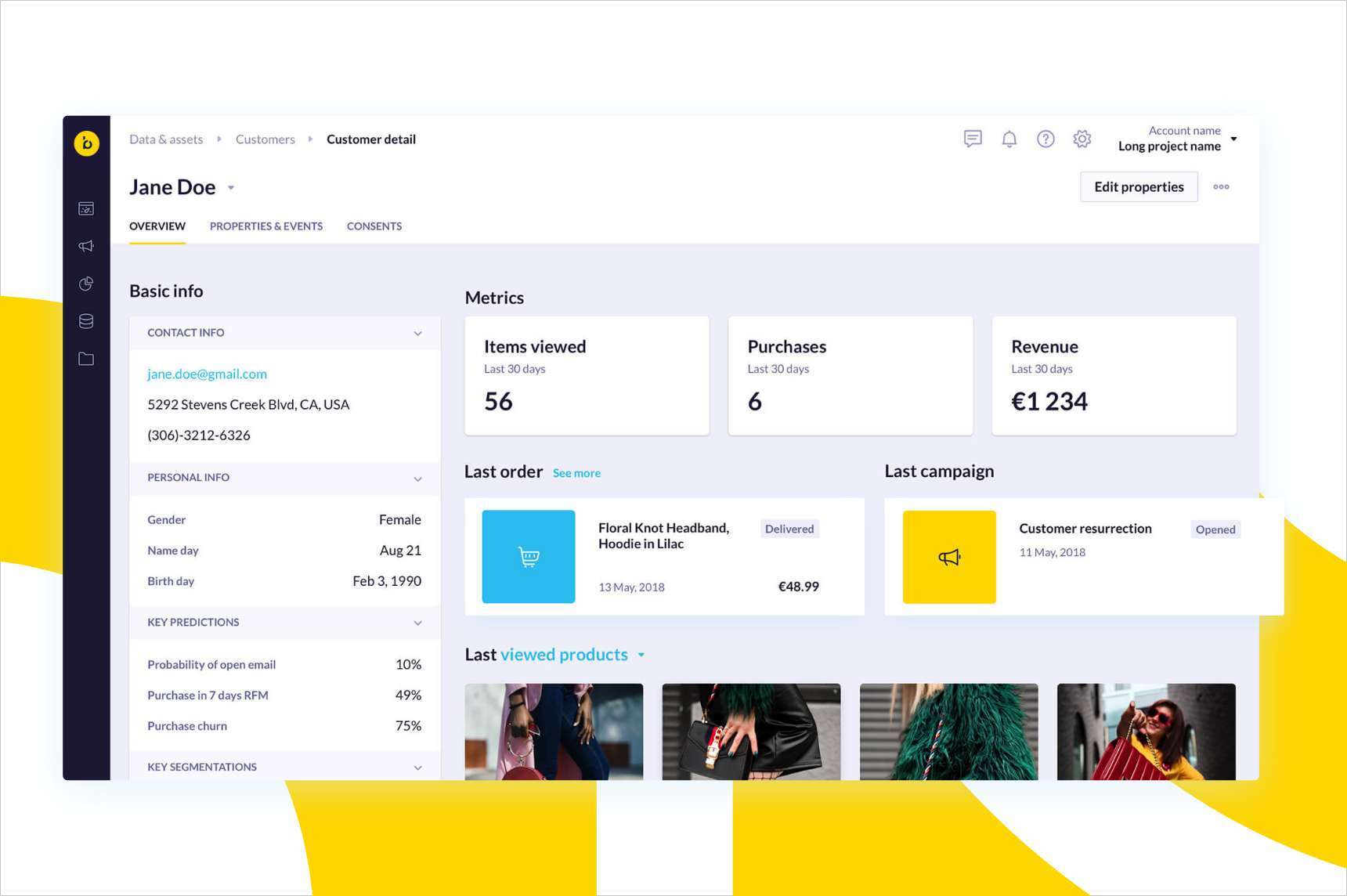Getting To Know Your Customers With a Unified Data Strategy
By Bill Aicher
04/25/2024

Do you know your customers?
Most marketers like to think so. But truly understanding them — knowing their likes and dislikes, their inclinations and preferences — can be a real challenge.
That’s because shoppers aren’t static. Their relationship with your brand is always changing, with new wants and needs brought to the table with each new interaction. And if you can’t grasp those characteristics quickly, you risk offering a disappointing experience.
Every time a customer engages with your brand, it can’t be a cookie-cutter storyline. It should be its own unique story, one you write with their past, present, and future needs in mind.
And like all good stories, the best ones get the details right.
So, with this in mind, let me tell you a story that can shed some light on how important it is for you to understand your customers — and how the right marketing platform can help you do so.
The Ups and Downs of a Modern Customer Story
Picture this: a woman gets a new corporate job. However, after searching every corner of her closet, she realizes that her wardrobe is extremely outdated. She hasn’t been clothes shopping in ages and it’s time for an upgrade.
Later that night she opens her laptop and begins her search. Google Shopping becomes her best friend and she discovers the perfect navy blue dress. She clicks the link, and as the site loads, she’s prompted to “sign up for email updates” so she can save 10% on her first order. Wanting to save some money, she fills out the form.
Ding! goes the inbox alert. Her coupon has arrived. She copies the promo code and heads back to the retailer’s website, only to see that the dress is on backorder. Lucky for her, it’s in stock at a brick-and-mortar location just down the street. She rushes to the store and manages to snag the dress before they close for the day, using her coupon and signing up for the store’s loyalty program as she makes the purchase.

Mission accomplished. Or so she thinks…until she gets home and realizes none of the shoes in her wardrobe match. If only she’d had more time in-store to look for a pair. Unphased, she lies down on the couch, takes out her phone, and clicks the link in the email receipt from her in-store purchase, heading back to the store's website.
As the home page loads, that same popup for 10% off appears. She fills in the form again but is told she is no longer eligible for the discount.
Disappointed, she dismisses the message and is presented with the generic homepage: a hero image promoting the latest line of sweaters. She’s not interested, so she finds the menu link that takes her right to the shoe department.
Once there, she’s presented with an array of their best-selling sneakers, which obviously aren’t the right kind of footwear to match the dress.
Frustrated, she scans the page for something more suitable, gives up, and searches the site for “dress shoes.” Eventually, she finds a pair and adds them to her cart.
But something happens — she gets a phone call, gets distracted by social media, steps away from her phone to make dinner, who knows — and she ends up going to bed before making her purchase.
A few weeks later, she sees the dress hanging in her closet. She hasn't worn it and decides she’s probably never going to. She doesn’t have the right shoes, after all. So she finds the receipt, returns the dress, and doesn't ever step foot in the store again.
The woman in this story shrugs it all off. She got her money back and, other than a few annoyances, isn’t any worse off than she was before.
But for the retailer where she bought her dress, this is a cautionary tale — one that could have been avoided with a unified data strategy.
How a Unified Data Strategy Can Help Write the Perfect Customer Story
To avoid this kind of scenario, you need to make sure your customer experience doesn’t feel like the same old story every time your audience engages with your brand. Each interaction you have with a shopper needs to feel like the next step in their unique journey.
For our dress shopper, her initial shopping experience was fine, and she was determined to buy her dress. But the next time she tried to shop for shoes, the brand treated her like they'd never seen her before. After a few disappointments, she eventually lost interest.
The retailer never connected the insights gained from her shopping sessions to tailor her customer journey accordingly. This is what a unified data strategy can offer businesses, and why it’s so essential.
Simply put, a unified data strategy involves integrating data from various sources and storing it in a centralized repository for insight and analysis. It brings all your data together so you can use it to your advantage, activating it across all your channels and touchpoints.
This central repository is also known as a single customer view: a database that collects and combines accurate data points into unique customer profiles for every individual who interacts with your business.
With all your data consolidated in one place, you can truly know your customers and glean insights into who they are. The items they viewed, the purchases they made, the emails they opened — these data points can all help you craft the next chapter in their story and avoid frustrating plot twists in their customer experience.

To achieve this understanding, you need a powerful marketing platform that can consolidate all your data, integrate all your channels, and streamline your campaigns into a cohesive story. These are the building blocks of the ideal customer experience, and that’s exactly what Bloomreach Engagement offers.
With the ability to organize your data into customer profiles, activate insights, and orchestrate customer journeys from a single platform, you have everything you need to build meaningful customer relationships. You can write stories where your customers are the stars, offering personalized interactions that fit their needs perfectly.
Using Data To Make the Customer the Main Character
So, what does a unified data strategy look like? What part could it play in our dress-shopping narrative?
Looking back at the scenario, we can see a variety of touchpoints where the retailer could’ve driven further engagement if it had instituted a unified data strategy. After all, we already know a lot about the shopper and how she interacted with the brand.
We know she first interacted via a paid Google Shopping ad and that this was her first-ever visit to the site. And most importantly, we have her email address, along with consent to send her marketing campaigns.
We also know she entered the site directly on a product display page, and that she received an email and opened it, but didn’t click through.
In many instances, this could be where we completely lose track of her. But that’s not what happened — she made a purchase in-store, which we know because we can tie her in-store purchase back to the coupon she received in her email. She also signed up for a loyalty program, where she provided her email address and phone number, meaning we now have two unique identifiers.
We also know her preferred dress size, the color of the dress she purchased, and the cut and the brand of the dress.
But without a platform that connects these data points with this shopper’s unique customer profile, we can’t glean insights from her behavior or preferences. What we know doesn’t matter for future marketing efforts. We can’t use it for the next chapter in her story.
Some might not be concerned by this. After all, she bought the dress, the brand made the sale, so marketing did its job. But that’s a shortsighted view, and one that doesn’t see the potential value in each and every customer.
Making a sale and earning a customer are two different things, as the rest of our dress-shopping story proves.
The Limitless Possibilities of a Data-Driven Narrative
Here’s where things get interesting. In our original story, the second half of our shopper’s experience was one frustration after another.
But with a marketing platform like Bloomreach Engagement identifying key insights, our dress shopper is instantly recognizable the next time she engages with the brand. Her data can be used to fuel next-level customer experiences at each new touchpoint.
When our dress shopper returns home, remembers she needs shoes, and clicks the link in her email receipt, we know it’s her due to a unique identifier passed through in the URL. We know this even though she’s on her iPhone and has never visited the site using her phone before.
And because we know it’s her visiting the site, we know she recently made a purchase. We know she bought a dress, and we know all the relevant characteristics of that dress.
We know she has never bought shoes from this brand before, and that the dress she purchased has an accompanying line of shoes that are perfectly matched for it — we also know that a sizable number of previous shoppers who purchased the same dress also bought similar shoes. We even know what color goes best with the particular shade of blue she purchased.
And because we know all this, we don’t bother her with the 10% pop-up (since we know she’s already signed up for emails and has claimed that special offer). And we take that hero image location on the home page and use it to promote the matching shoes. She doesn’t have to search for what she is looking for — she finds it easily and we avoid her potentially leaving the site in frustration.

But she does get distracted and leaves the site anyway. Why? That’s one thing we don’t know.
But since we do know who she is, what she purchased, and what subsequent products she viewed but did not purchase, we can now send her an abandoned cart email reminding her to come back and complete the order. And if she doesn’t act on that, we can run retargeting ads highlighting those shoes.
She doesn’t forget about the dress. And she certainly doesn’t forget about buying matching shoes. A few days later, she’s back on the site, having clicked through an SMS link we sent after she didn’t act on the abandoned cart email.
She buys the shoes. They arrive a few days later, and they are, indeed, perfect.
And the next time she’s shopping, she doesn’t go to Google. She goes directly to the store’s site, and when time permits, walks down the street to the brick-and-mortar store. She buys from the retailer again. And again. And again.
She is now truly a customer, thanks to the brand building a meaningful relationship with her based on a deep understanding of her needs, wants, and preferences.
This is the long-lasting benefit that a unified data strategy offers. Once you know your shoppers — and have the right marketing platform powering your touchpoints — you can add a personal touch to each shopper’s story, creating a customer experience that will keep your audience coming back for more.
Found this useful? Subscribe to our newsletter or share it.





